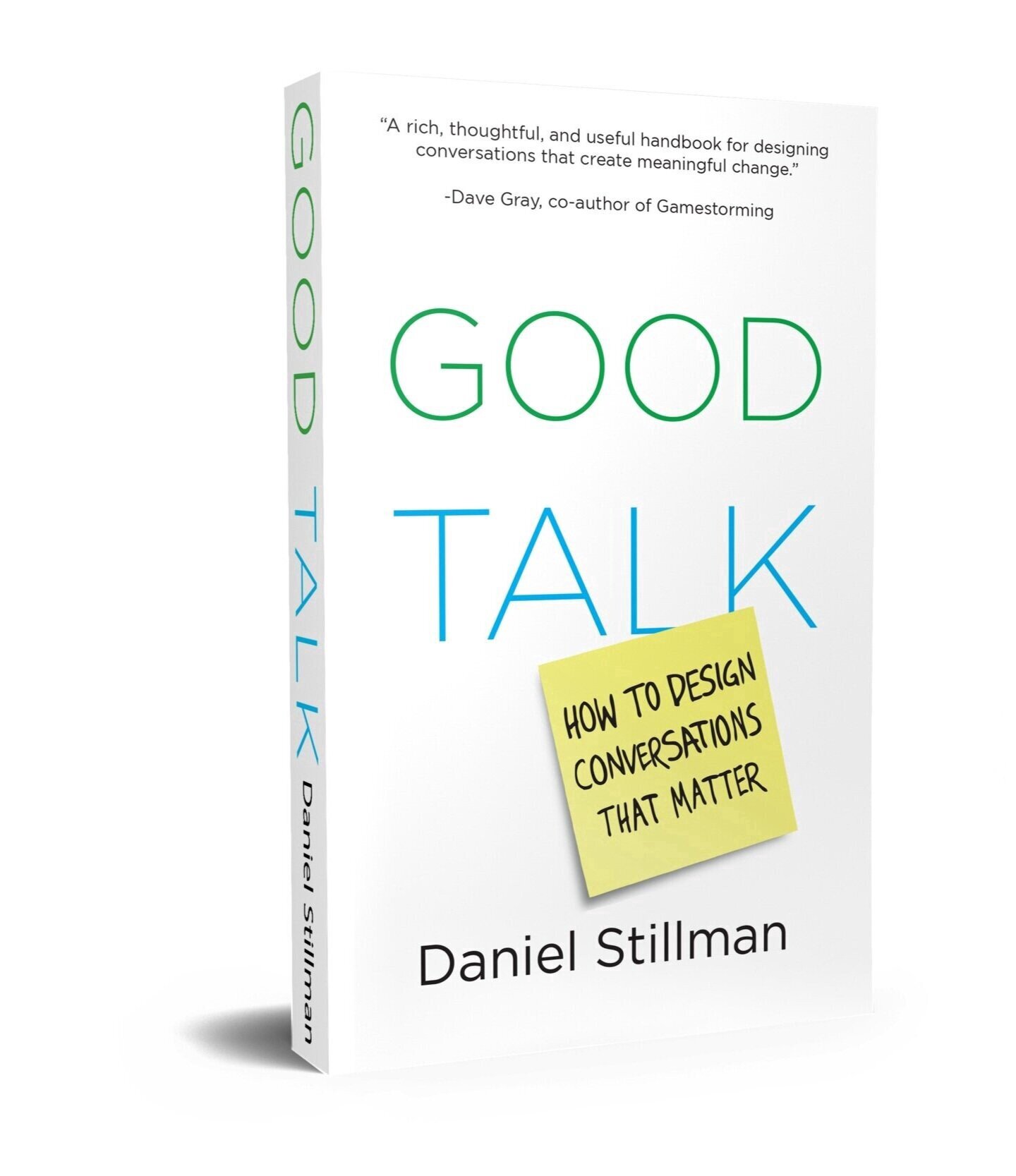also: The future of work is already here.
What is the “Future of Work”? For some, the future of work is Artificial Intelligence and automation. For others, it’s the gig economy, fluid workers moving from job to job in the blink of an eye.
All of those futures of work are already here. People stay in jobs for shorter spans. Computers and robots are better than us at more and more tasks, from reviewing legal precedents to logging trees. Soon, the jobs that are left will be the ones that ask more of our unique human capacities, emotionally and intellectually, to do things robots can’t do well: feel and wonder. The future of work is in jobs where the outcomes are tough to measure and goals shift frequently. These jobs can only be done through conversation.
At work and in our work, we’re not taught how to have conversations. The art of conversations is lost in the fast-paced, tech-driven world. When we’re next to someone we don’t offer to make conversation, we look down at our phones, avoiding any potential awkward conversation. The result being — we don’t really know how to talk to people.
I wrote a book about conversations and how we can (and already do) design them. Some people feel like conversations are a squishy word and that design excludes people. I say: design belongs to everyone now. And we are all designers of our conversations. What you’re reading is an excerpt from that book, Good Talk: How to Design Conversations that Matter.
“We had talk enough, but no conversation.” Samuel Johnson
The Difference Between Talk and Conversation
Sherry Turkle’s NYT bestseller, “reclaiming conversation” begins with the quote “We had talk enough, but no conversation.” from Samuel Johnson’s 1752 The Rambler
We have plenty of meetings and lots of talk. Some estimates figure that the average worker spends about five hours in meetings each week. For managers, that number rises to 12 hours. In the public sector, it’s 14 hours. Most of these hours are reported to be “ineffective” at delivering solid outcomes. That’s a huge financial loss in productivity. That loss could be as much as 37 billion (with a B!) according to one study. And that’s just official meetings. How can we move from just a lot of talk to…meaning?
Telling people the solution to a problem only feels strong and heroic. Conversational leaders empower others through thoughtful questions, framing the debate in a more subtle mode of power: making others feel powerful.
We move towards conversations when we move towards asking and listening over micromanaging and telling. Conversational leaders are the managers who don’t just tell their employees to work harder, fix this, or change that. They’re the managers that stop and ask, “Well what do you think? Why did you design this that way?” And without realizing it, the employees feel empowered to really give their best and care about their work. It’s a life-changing experience to have a boss, manager (or even friend) who knows how to ask questions and have conversations about work and life.
The future of work is filled with managers, employees, and people who lead by having conversations.
Leading the Conversation
Since we all have the power to speak (in writing or speech) anyone can be a conversational leader, no anointment required. These leaders appear in the moment — when they see a need — and meet it. These leaders are also not permanent. They are more like waves in the ocean, swelling up and cresting, and then disappearing back into the wide expanse of the sea.
All that’s required in order to be a conversational leader is the curiosity and willingness to ask powerful or interesting questions. The world needs conversational leaders, now, more than ever.
In 1867 John Stuart Mill suggested that, “Bad men need nothing more to compass their ends, than that good men should look on and do nothing.” Conversational leaders can look like whistleblowers reporting dangerous or harmful industry practices. Or they can be the person on the team willing to wonder out loud why things are the way they are and ask if we can do better.
Without anyone to ask and open the conversation, no progress is possible.
If you want to be one of these leaders, you need to learn how to have (and design) conversations that matter. The kinds of conversations robots (hopefully) will never be able to have.
Learn more and pre-order Good Talk: How To Design Conversations That Matter.

